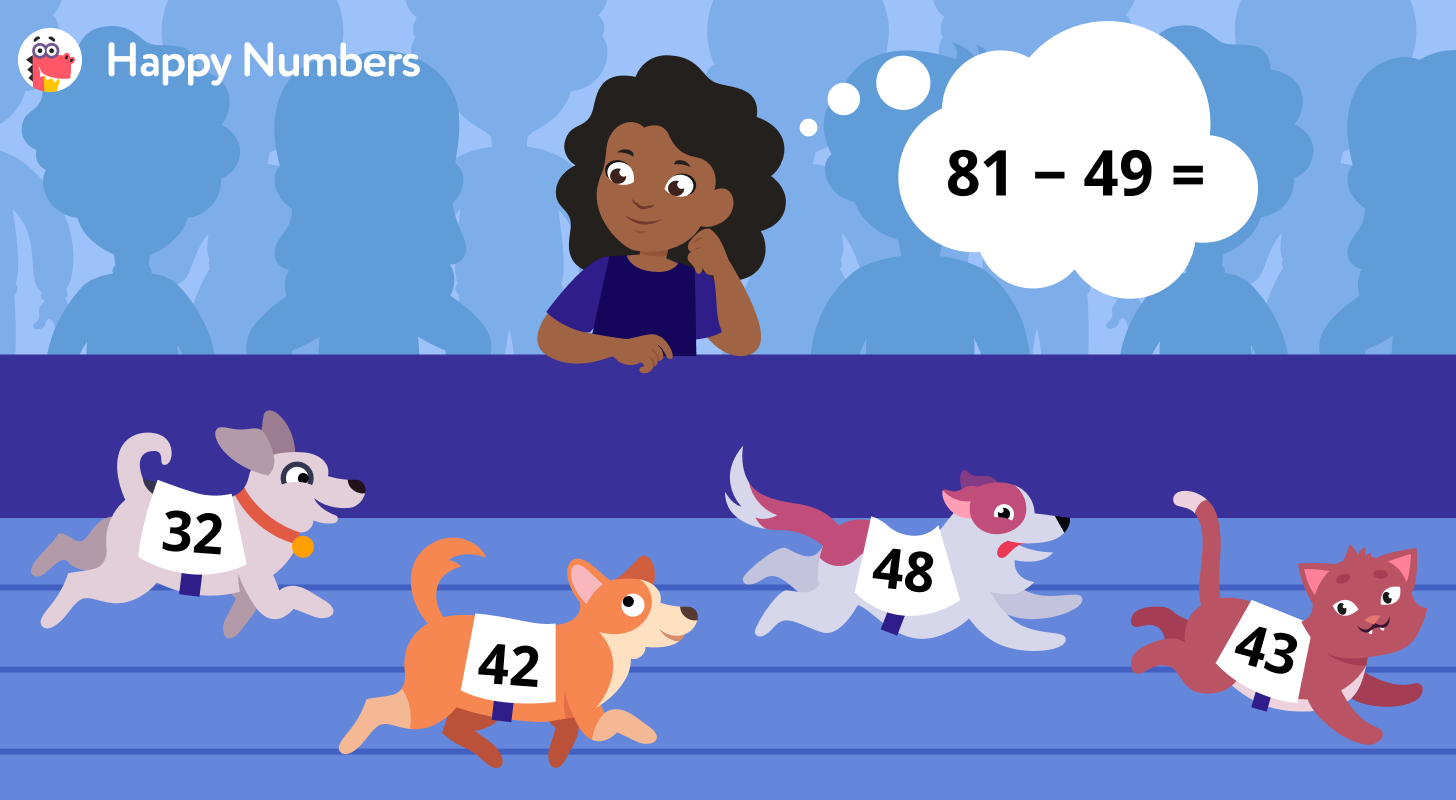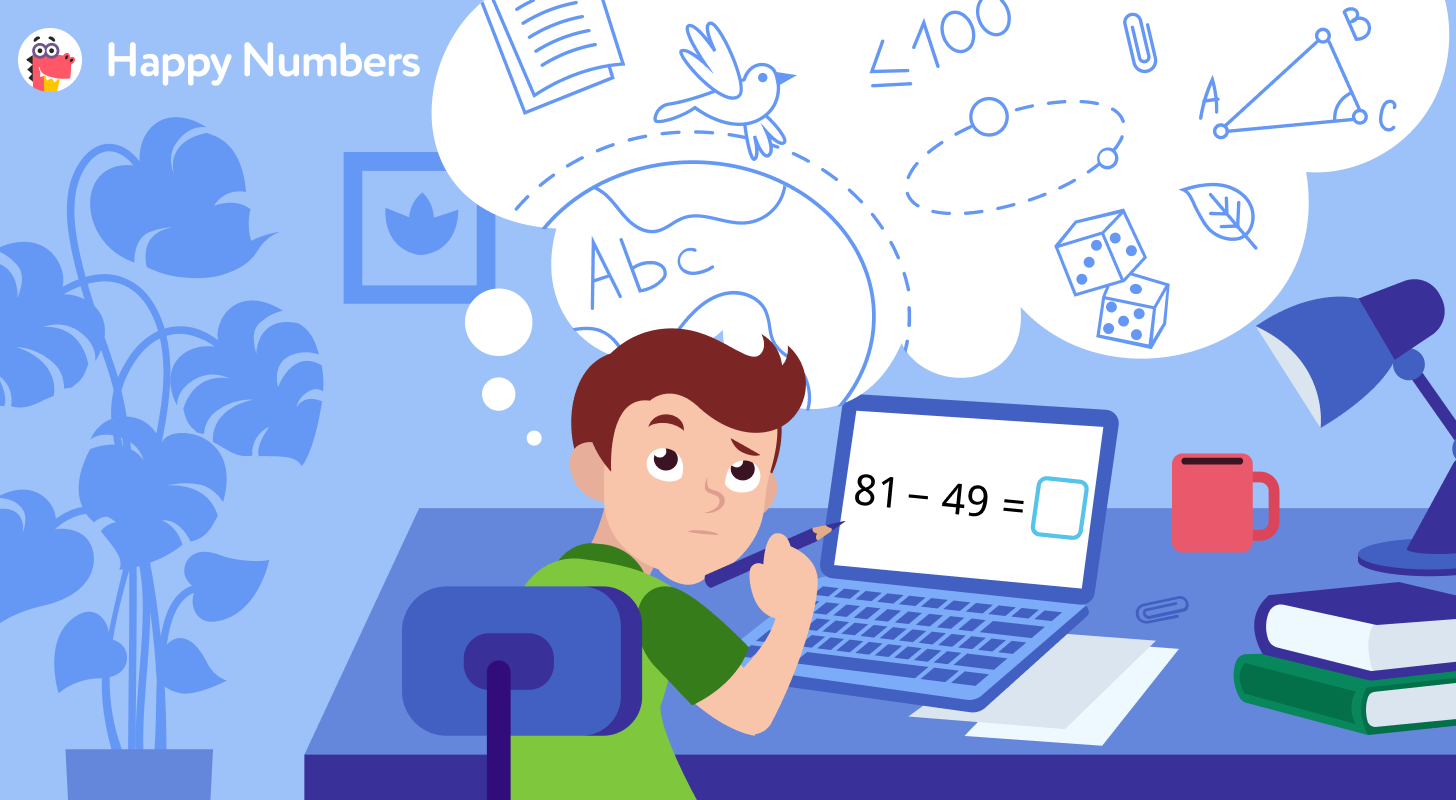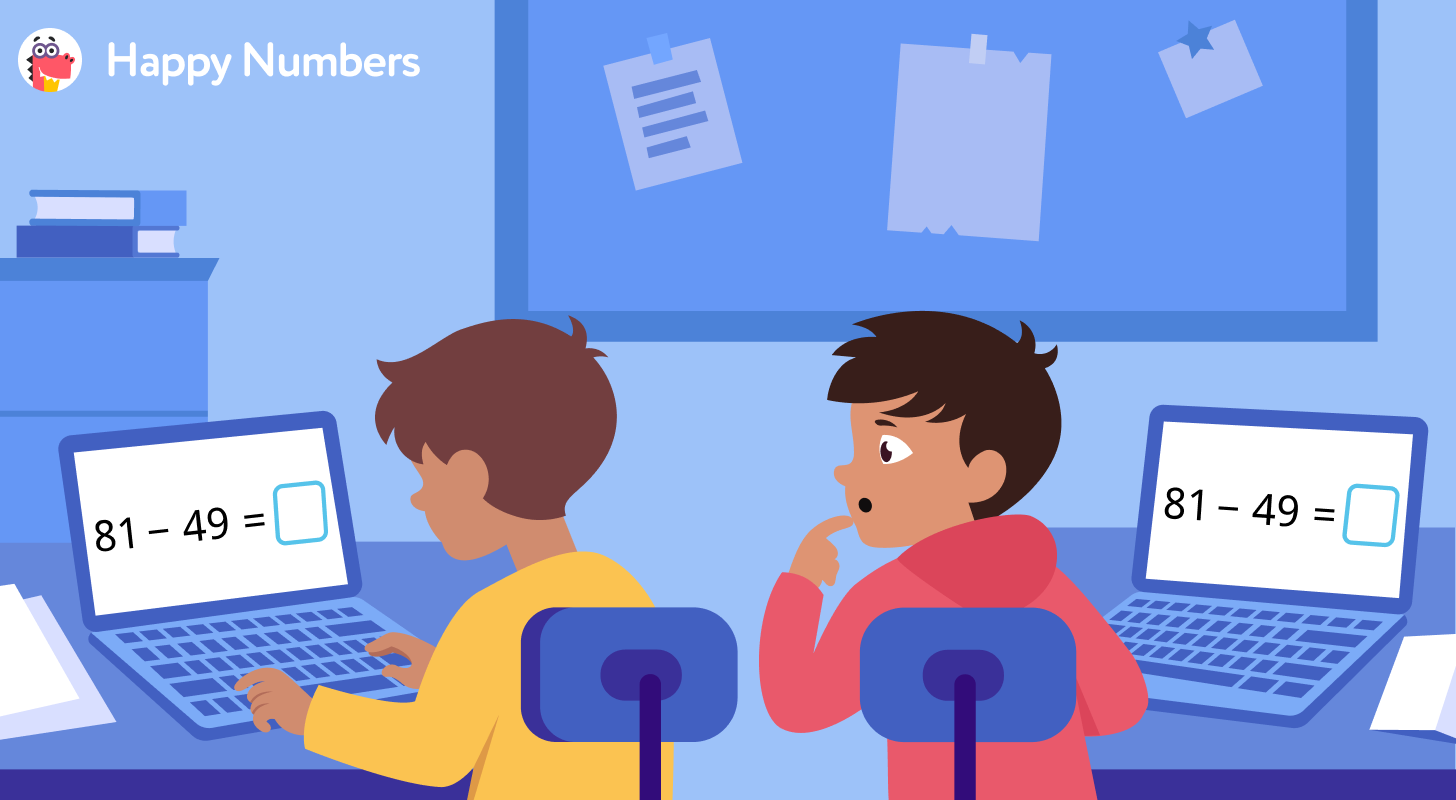Subtraction, as 3-Graders See It
Subtraction, as 3rd Graders See It

What if we ask you to subtract 81 - 49? One may start with different strategies: from breaking down the numbers to using models or even counting on fingers! Indeed, there are several ways to perform this calculation, but believe it or not, the majority of third-graders who took the Placement Test on Happy Numbers invented their own brand new way.
Though it was incorrect, it made us wonder about these common but curious patterns students naturally come up with each time they face a tricky task. Once again, we decided to dig deeper into data and use this situation to our advantage.
Discovering a new workaround

To see the scope of our students’ creativity, we analyzed the answers of as many as 18,342 of them, and the results are shown on the graph below. Why was the incorrect response “48” such a popular one? We assume that the students’ reasoning could be the following.

To subtract 81 - 49, they first break down 80 into 80 and 1, and 49 into 40 and 9. Then they subtract tens from tens: 80 - 40 = 40. But what about ones? We can’t subtract 1 - 9, so why don’t we simply turn them around? 9 - 1 looks much easier to subtract, and we get 8 for the ones place. So, 48 is the answer.
Though this algorithm is clearly incorrect, it looks reasonable to some students and they rely on it each time they need to decompose tens or hundreds.
Coincidence or pattern?
To prove our theory, we decided to check some more data. Guess what was the most popular answer for this question: 714 - 587 = ?
The graph below shows the answers of 7,053 students, and the most popular answer 273 was calculated using the same incorrect algorithm.

Confidence and math flexibility are skills that we constantly encourage and strive to develop in our students. The only reason their approach didn’t work for subtraction was the lack of conceptual understanding. As always, Happy Numbers is here to help them out. As a core strategy of our curriculum, the concrete-pictorial-abstract approach develops the deep understanding of all PK-5 key math concepts.
Predict and prevent mistakes

In addition to helping students to establish a solid conceptual understanding of the most complex math topics, Happy Numbers continually works to predict such typical mistakes and provide scaffolding and constant feedback for such scenarios. For instance, this is an example of a task where students interact with a model to perform 2-digit subtraction with regrouping.
Although this article was prompted by our desire to share an inside look at the curriculum-building process at Happy Numbers, we also hope that it will encourage you to take a fresh look at the importance of conceptual understanding of math. Check out some more ideas that Happy Numbers incorporates in its lessons and set up your whole class right now!
